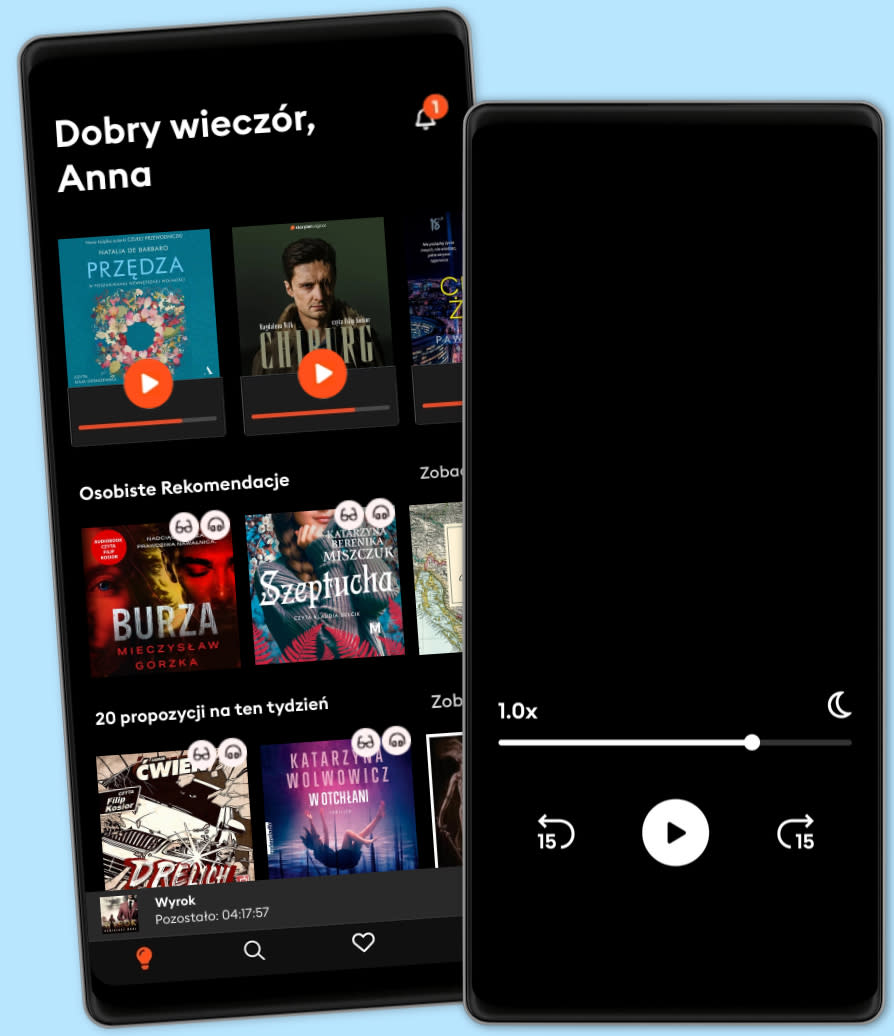Słuchaj 50% taniej przez 4 miesiące!
Świat setek tysięcy audiobooków i e-booków czeka na Ciebie - teraz za jedyne 19,95 zł miesięcznie przez pierwsze 4 miesiące.
- Czytaj i słuchaj jak chcesz i ile chcesz
- Ponad 500 000 tytułów
- Tytuły dostępne wyłącznie w Storytel oraz Storytel Originals
- 7-dniowy bezpłatny okres próbny
- Łatwa rezygnacja w dowolnym momencie

LWUIT 1.1 for Java ME Developers
- Autor
- Wydawca
- Język
- angielski
- Format
- Kategoria
Literatura Faktu
In Detail
Writing appealing cross-device applications today in Java ME is challenging as implementation differences in fonts, layout, and menus can make your application look and behave very differently on different devices. So far, the only way out has been low-level programming with its associated complexity.
The Lightweight UI Toolkit (LWUIT), an open source Java library, offers Java ME developers an easy-to-use API for creating impressive user interfaces with a device-independent look and feel. The LWUIT library contains many components and tools for bringing consistency and visual gloss to the user interface of your applications, and this book will take you through all of this, to help you get the user interfaces you want.
Java ME allows us to write applications that are, generally speaking, portable across a wide range of small devices that support the platform. While the basic functionalities usually work well on all supported devices, the area that does pose problems for developers is the User Interface. Native implementations of javax. microedition. lcdui - the primary API for UIs in Java ME - differ so widely from one device to another that maintaining a device-independent and uniform look and feel is virtually impossible. Another problem with the javax. microedition. lcdui package is that it does not support components and capabilities that can fully satisfy present day user expectations. The Lightweight UI Toolkit is the solution to these problems. LWUIT offers a wide range of components with a device-independent look and feel for building UIs. While some of these widgets are also available under lcdui, there are a number of new ones too. These additions enable application developers to design UIs that can come very close to their desktop counterparts in terms of visual sophistication and LWUIT is not just about new components either. The API supports a whole range of new functionalities (like Theming and Transitions) too.
This book takes Java ME developers through the library, with examples showing how to use the main components and functionalities. It also goes beyond a description of what is available by showing how to extend the library by plugging in custom-built classes.
Build captivating and device-independent UI screens using the LWUIT library
Approach
This book presents LWUIT through an optimum mix of theory and practice. Classes are described and their applications are demonstrated through a large number of examples. Example code is thoroughly analyzed and many screenshots are included to show what happens when the code is executed. Custom classes are built progressively with a thorough explanation of each step. The book also presents the underlying structural features of LWUIT that are important for skillful use of the API
Who this book is for
This book is for Java ME developers who want to create compelling user interfaces for Java ME applications, and want to use LWUIT to make this happen.
© 2009 Packt Publishing (eBook): 9781847197412
Data wydania
eBook: 19 sierpnia 2009
Inni polubili także ...
- Certified Wireless Security Professional Official Study Guide Tom Carpenter
- Cryptocurrency Mining for Dummies Tyler Bain
- See Yourself in Cyber: Security Careers Beyond Hacking Ed Adams
- A First Course in Scientific Computing: Symbolic, Graphic, and Numeric Modeling Using Maple, Java, Mathematica, and Fortran90 Rubin Landau
- Java: Includes Yogyakarta, Borobudur and Solo Paul Dixon
- Body Language: Read People Like a Book and Detect Their Thoughts (volume 1) Judie Hassler
- The DevSecOps Playbook: Deliver Continuous Security at Speed Sean D. Mack
- The Art of Attack: Attacker Mindset for Security Professionals Maxie Reynolds
- Python For Data Science: The Ultimate Comprehensive Step-By-Step Guide To The Basics Of Python For Data Science Kevin Clark
- Take Back Your Time: The Guilt-Free Guide to Life Balance Christy Wright
- Arka. Niebo Jakub Żulczyk
4
- Harry Potter i Kamień Filozoficzny J.K. Rowling
4.7
- Random 2.0 Natasza Parzymies
4.5
- Pomoc domowa Freida McFadden
4.7
- Egzamin na ojca Danka Braun
4.7
- Wiedźmin Andrzej Sapkowski
4.7
- Harry Potter i Komnata Tajemnic J.K. Rowling
4.8
- Zakręty życia: Rozmowy o miłości, depresji, nałogach i odnajdywaniu siebie Ewa Woydyłło
4.8
- Random Natasza Parzymies
4.6
- Gwiazdkowy prezent (1) Agnieszka Pruska
4
- Pierwsza sprawa. Komisarz Oczko (1) Tomasz Wandzel
4.3
- Harry Potter i Więzień Azkabanu J.K. Rowling
4.8
- Dziwny wypadek. Komisarz Oczko (16) Tomasz Wandzel
4.6
- Chłopki. Opowieść o naszych babkach Joanna Kuciel-Frydryszak
4.8
- Apofenia Magdalena Kornak
4.5
Wybierz swoją subskrypcję:
Ponad 500 000 tytułów w cenie jednego abonamentu
Słuchaj i czytaj w trybie offline
Ekskluzywne produkcje audio Storytel Original
Tryb dziecięcy Kids Mode
Anuluj kiedy chcesz
Unlimited
Dla tych, którzy chcą słuchać i czytać bez limitów.
1 konto
Nielimitowany Dostęp
1 konto
Słuchanie bez limitów
Anuluj w dowolnym momencie
Unlimited na rok
Dla tych, którzy chcą słuchać i czytać bez limitów.
1 konto
Nielimitowany Dostęp
1 konto
Słuchanie bez limitów
Anuluj w dowolnym momencie
Basic
Dla tych, którzy słuchają i czytają od czasu do czasu.
1 konto
10 godzin/miesięcznie
1 konto
10 godzin / miesiąc
Anuluj w dowolnym momencie
Family
Dla tych, którzy chcą dzielić się historiami ze znajomymi i rodziną.
2-3 kont
Nielimitowany Dostęp
2–3 konta
Słuchanie bez limitów
Anuluj w dowolnym momencie
2 konta
59.90 zł /miesiącPolski
Polska